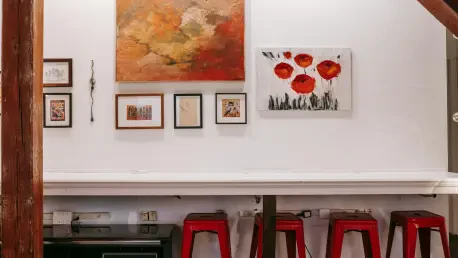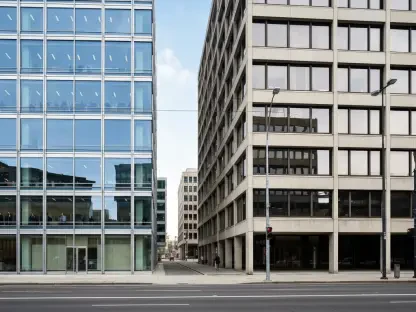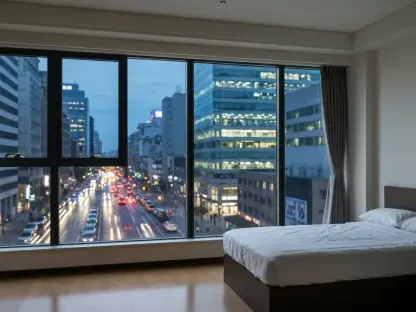In a world where home interiors have long been dominated by muted tones and minimalist aesthetics, a vibrant shift is taking the design world by storm, challenging the status quo with an explosion of color and personality that redefines personal spaces. For years, beige sofas, gray walls, and matching decor have defined countless living spaces, often leaving them feeling sterile and devoid of character. Now, a growing movement is rejecting this “sad beige” trend in favor of bold hues, eclectic patterns, and a celebration of individuality. Social media platforms are buzzing with images of homes that embrace joy over uniformity, inspiring people to rethink what their spaces could be. This rebellion against bland design isn’t just about aesthetics; it’s a call to create environments that reflect personal stories and evoke genuine emotion. As this trend gains momentum, the question arises: are living spaces prepared to break free from neutrality and embrace a more colorful, expressive approach to design that truly feels like home?
1. The Rise of a Bold Design Movement
This colorful uprising in home design marks a significant departure from the minimalist trends that have ruled for over a decade. Influenced by Scandinavian simplicity and the pursuit of Instagram-worthy perfection, many homes adopted neutral palettes that prioritized calmness over character. Think endless shades of gray, faux marble surfaces, and an almost obsessive commitment to uniformity. However, this approach often resulted in spaces that felt more like showrooms than lived-in homes. The lack of personal touches left many yearning for something more vibrant and authentic. As dissatisfaction grew, a pushback began to emerge, fueled by a desire for interiors that spark joy rather than merely blend in. This shift is evident in the growing popularity of homes that dare to stand out, showcasing bold colors and unique decor choices. The movement is not just a passing fad but a response to a deeper need for self-expression in personal spaces, challenging the notion that safe and neutral is the only way to design.
The catalyst for this design rebellion can be traced to recent global events that reshaped how people interact with their environments. When the world faced extended periods of confinement during the pandemic, individuals found themselves staring at the same uninspiring walls day after day. This sparked a craving for visual stimulation and emotional uplift through decor. Additionally, economic challenges like the cost-of-living crisis encouraged creative solutions such as upcycling and sourcing second-hand treasures. Social media played a pivotal role in amplifying these ideas, with trends like dopamine decor and cluttercore gaining traction. These concepts celebrate real, lived-in spaces over curated perfection, inspiring a wave of content that prioritizes individuality. Younger generations, in particular, are rejecting algorithm-driven aesthetics, focusing instead on what feels right for their daily lives. This cultural shift underscores a broader move toward designing homes that resonate on a personal level, rather than adhering to external expectations.
2. Breaking Free from Beige Constraints
The constraints of beige and gray interiors have become increasingly apparent as more people recognize the emotional toll of soulless design. While minimalism can offer a sense of order, it often strips away opportunities for spontaneity and personal storytelling. Homes decked out in neutral tones can feel oppressive when they lack elements that reflect the inhabitants’ personalities. The pressure to conform to a specific, homogenized look—often driven by fast furniture and mass-produced decor—has left many spaces feeling interchangeable and forgettable. This rebellion against such uniformity encourages a return to color as a means of reclaiming identity within the home. By introducing vibrant shades and bold accents, individuals can transform even the smallest areas into expressions of joy. The movement isn’t about discarding minimalism entirely but rather about balancing it with elements that feel uniquely personal, allowing for a space that is both functional and emotionally fulfilling.
Beyond just color, this design shift emphasizes the importance of objects and textures that tell a story. Shelves no longer need to be meticulously styled for aesthetic appeal; instead, they can overflow with meaningful items like cherished books, quirky trinkets, or handmade crafts. Mixing old and new pieces also adds depth, such as pairing a vintage rug with modern flooring or placing a retro sideboard beneath a contemporary art piece. Patterns, too, play a crucial role in breaking the monotony of neutral spaces. Stripes, florals, and geometric designs can coexist in harmony when tied together by a cohesive color palette, adding energy without overwhelming the senses. Embracing a lived-in look further enhances this trend, where a slightly cluttered bookshelf or visible everyday items are celebrated rather than hidden. This approach redefines beauty in home design, prioritizing authenticity over perfection and encouraging spaces that feel warm, inviting, and reflective of real life.
3. Practical Steps to Join the Color Revolution
For those inspired to break away from neutral tones, starting small can make the transition less daunting while still delivering impactful results. Begin with subtle changes, such as swapping out beige cushions for ones in rich, jewel-toned hues or introducing bold bedding to a bedroom. Even minor tweaks, like painting a door frame or baseboard in an unexpected shade, can inject personality into a space without requiring a full overhaul. Colorful lamp bases or patterned rugs also serve as accessible entry points for experimenting with vibrancy. The key is to focus on elements that evoke happiness rather than adhering to strict design rules. This rebellion is about freedom, not replacing one rigid aesthetic with another. By gradually incorporating color, individuals can test what resonates with their personal style, ensuring that each change feels intentional and reflective of their unique tastes and experiences.
Taking this a step further, consider how flooring and larger structural elements can contribute to a bolder aesthetic. A herringbone wood floor can add warmth and a sense of history to a colorful room, while patterned tiles can act as a statement feature in kitchens or bathrooms. Mixing different design eras also enhances this vibrant approach—think of combining antique furniture with modern prints for a dynamic contrast. Embracing imperfections is equally important; a home that looks lived-in, with toys scattered or laundry visible, aligns with the ethos of this movement. The goal is to create an environment that feels genuine, not staged for external approval. For those hesitant to dive in fully, focusing on one room or area as a testing ground can build confidence before expanding the approach. Ultimately, the process should be guided by what brings joy, allowing for a home that evolves organically with the people who inhabit it.
4. Reflecting on a Joyful Design Legacy
Looking back, this colorful design rebellion proved to be a transformative moment in how homes were perceived and crafted. It shifted the focus from uniformity to individuality, reminding everyone that personal spaces deserved to reflect the lives lived within them. The rejection of beige and gray as the default palette opened doors to creativity, encouraging countless individuals to experiment with color and texture in ways that felt true to their identities. Social media platforms captured this evolution, showcasing real homes filled with character over curated perfection. Economic challenges also played a role, as they pushed people to find innovative, budget-friendly ways to personalize their environments. This movement wasn’t just about aesthetics; it redefined the emotional connection between people and their spaces, fostering environments that uplifted spirits. As a next step, consider exploring local thrift stores or online communities for unique decor pieces, and take time to assess which colors and objects truly resonate. This ongoing journey toward joyful design promises to inspire future innovations in how living spaces are imagined.









